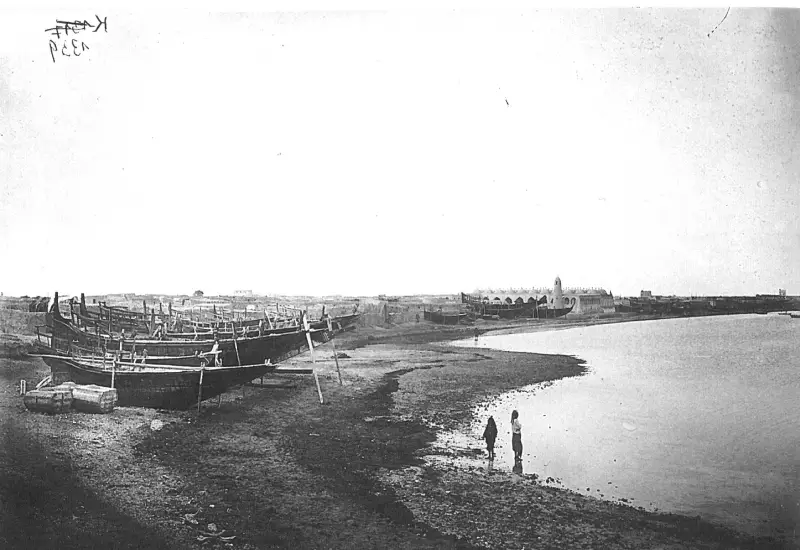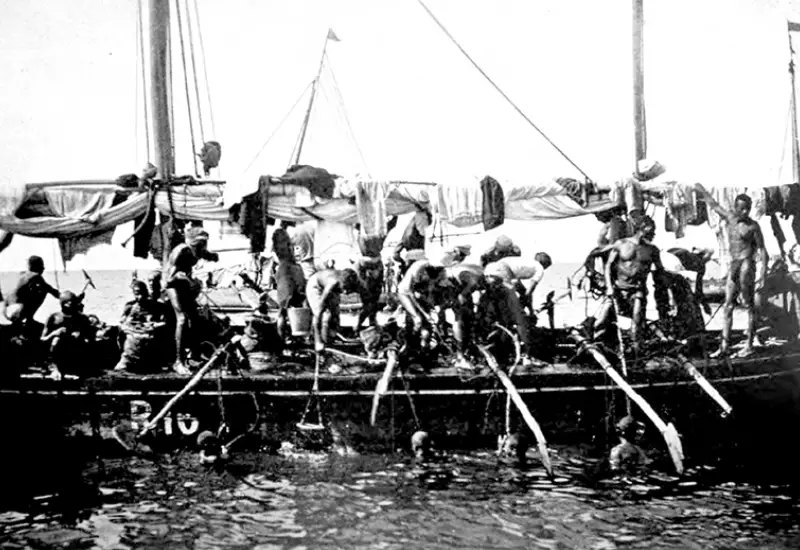Despite Qatar’s short history, evidence shows that people have lived in this country since 4000 BC. The Qatar Peninsula, in some ways, is a modern construct divided between before and after the Qatar 2030 project. In this article, we examine the history of Qatar at a glance.
Table of Contents
ToggleThe early history of Qatar
The first evidence of permanent human habitation in Qatar dates back to the sixth millennium BC. The evidence was found in dishes with beautiful patterns and tools in different places, including the Al Khor region.

Some of the discovered settlements and tools belong to the period known as the Ubaid period. In southern Mesopotamia, motifs were found associated with people with the same name during this time. As a result, the earliest immigrants were connected to present-day Iraq.
Near the Persian Gulf, many remains from the Bronze Age were discovered, but not much was found in Qatar.
Except in areas like Al Khor and Ras Burouq. As early as 628 AD, Manzar bin Sawi Tamimi, the Christian ruler of the Al-Husa area, which included the Qatar peninsula, embraced Islam. Only a few sites from this early Islamic period have been identified.
During the Umayyad period, between the 7th century and the middle of the 8th century, Qatar became a camel and horse breeding center.

The Abbasid dynasty (8th to 13th century AD) saw the growth of the pearl industry alongside the pearl-rich beaches in Qatar’s waters. Archaeological remains from the late Umayyad period were discovered at Yougbi in northwest Qatar, while early Abbasid remains from the 9th and 10th centuries AD were found at Marwab, which includes 250 houses, two mosques, and a fortified mansion.
In addition to Marwab, several other Abbasid sites have been identified within Qatar’s borders in the north. Not much information is available from the 15th and 16th centuries.
At this point, Qatar saw the rise of many tribal entities, such as Bin Khalid, who ruled over a region of land that included Qatar and Kuwait. Muslim tribes have ruled the Qatar peninsula since at least the 16th century.

This region was also home to several other tribes before the 18th century, Al-Naim or Al-Hawala. In the 18th and 19th centuries, we saw the arrival of Dutch, French, Portuguese, and English merchants to Qatar, but Britain’s monopoly of the 19th century created Qatar’s modern history.
Read More: Where is Qatar?
The modern history of Qatar
The modern history of Qatar began in 1766. The establishment of the city of Al-Zubarah started the contemporary history of Qatar. Business at that time was fishing, buying, and selling pearls, but with the discovery of oil and gas, the face of this country changed completely, resulting in rapid economic growth.
In 1776, all ethnic groups gathered under the rule of the Al-Thani dynasty to get their independence and rights from the neighboring countries and establish good relations with the world.

That was the first step in creating a new Qatar, but in 1868, almost 100 years after this incident, Sheikh Muhammad bin Thani, as the representative of Qatar, signed an agreement with the British authorities in the Persian Gulf to establish Qatar as an independent political entity.
From 1875 to 1914, many developments took place in Qatar. Over the last quarter of the 19th century, Qatar was once again under Ottoman control. However, the country’s rulers retained considerable independence along with the union with Britain.
Under the rule of Sheikh Jassim bin Muhammad al-Thani, Ottoman relations were preserved, and despite all the differences of opinion, these relations were maintained until the death of Sheikh Jassim.

In 1916, Sheikh Abdullah bin Jassim Al Thani signed the 11-Article Anglo-Qatar Treaty while recording his reservations about three articles that he felt encroached upon national sovereignty. Those 3 basic items are listed below:
- Article 7: Allows British nationals to compete with residents in the pearl trade.
- Article 8: Requires the appointment of a British Political Resident in Qatar.
- Article 9: Allows Britain to establish a post and telegraph office in the country.
In the 1960s, Qatar began participating in international events and making a name for itself by joining the membership requirements of United Nations organizations such as UNESCO and the World Health Organization (WHO).

On September 3, 1971, Sheikh Khalifa bin Hamad al-Thani, the heir apparent and prime minister at the time, abrogated the 1916 treaty and, taking power by the government, announced a new phase in the country’s history and declared Qatar a fully independent state.
Read more: Qatar Travel FAQ
The new era of Qatar
To turn Qatar into a tourism hub in the Middle East, Qatar followed the path of the UAE. Construction of the towers and restoration and reconstruction in Qatar began, which was unprecedented in Qatar’s history.

All of this is part of the “Qatar National Vision 2030”, which aims to create prosperity for the country. Qatar’s government and the people of this country are working hard to improve the quality of well-being of the citizens and tourists of this country.
Until now, Qatar has been able to win the 2022 World Cup and the Asian Nations Cup and host the Asian Champions League with its vision. In the new era, Qatar has keyed many big projects that are opened one after another. Take it from Al-Thamamah Stadium to the Education City and Aspire zone.
They do everything for the development of their country and spend whatever money is needed. To develop their football, they started playing big players like Xavi Hernandez.

In order to enhance the country’s architecture, they went to Zaha Hadid, and whatever they needed, they called the best experts.
In the following years, we will hear a lot of news from Qatar; news that brings tradition and modernity together. While maintaining their customs and traditions, they also have a glimpse of the future and want to be among the first countries to show the world a schematic of the new generation of human urbanization. If you want more about it, Read Qatar Safety.









One Response
The insights in this article are very valuable. The author’s approach to the topic was engaging and informative. I’m curious to hear different perspectives on this. What do you think?